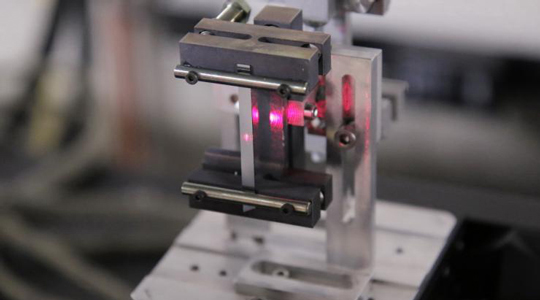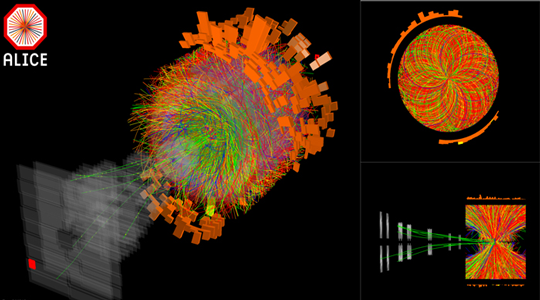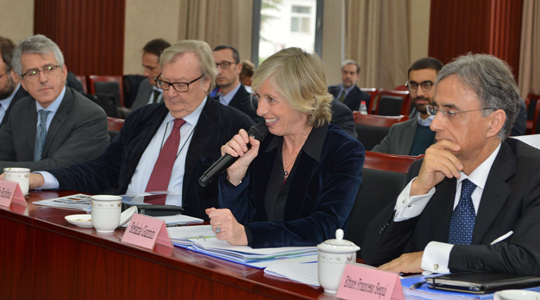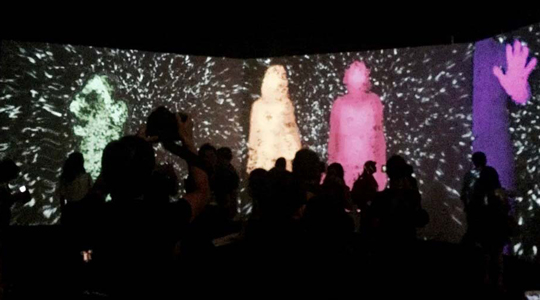FROM ITALY THE BENT CRYSTALS THAT "CLEAN" THE BEAMS OF THE LHC

CERN in Geneva, UA9 international cooperation. Thanks to the use of innovative crystals, partly implemented in Italy by INFN and partly in Russia, at the Petersburg Nuclear Physics Institute (PNPI), the UA9 researchers have obtained a world record, "channelling" with a bent crystal a particle beam at 6.5 TeV, the energy at which protons are accelerated in the Large Hadron Collider (LHC). The aim of the research is to allow an increase in the number of particles accelerated in the LHC, developing an efficient beam "cleaning" technology, thanks to the collimation with crystals. The development of technologies useful in improving the performance of the LHC and, in particular, its luminosity (the density of colliding particles in the beams) is of great interest in the High Luminosity LHC (HiLumi) project, under development at CERN, with the goal of increasing the potential for discovery of experiments in operation at the accelerator.
The UA9 international cooperation includes, in addition to CERN and INFN, the LAL (Laboratoire de l'Accélérateur Linéaire) laboratory - Orsay Paris, the Imperial College London, the Russian laboratories PNPI, the IHEP (Institute for High Energy Physics) in Protvino and the JINR (Joint Institute for Nuclear Research) in Dubna. The implementation of the bent crystal in Italy is the result of a joint effort between the INFN and the Sensors and Semiconductors Laboratory of Ferrara University, dedicated to the development of advanced crystal processing techniques. The result was obtained in collaboration with the Large Hadron Collider (LHC) Collimation Group and the Engineering Sources, Targets and Interactions (EN-STI) Group at CERN




 After the restart of the LHC (Large Hadron Collider) in June 2015, with a record-breaking collision energy of 13 TeV, and its first months of data taking with proton collisions, the super accelerator
at CERN in Geneva is moving to a new phase. Inside the LHC's beam pipe, the 27 km magnetic ring that lies at a depth of 100 metres beneath the French-Swiss border, the first lead ion collisions at an energy of slightly more than PeV (100 eV) have started. This is the highest collision energy between nucleon pairs reached in an experiment in collisions between nuclei (5 TeV per nucleon).
Data from these experiments will be collected for one month by the LHC's four experiments, ATLAS, CMS, ALICE (specifically designed to study collisions of this type) and LHCb, which is recording data from collisions between ions for the first time. These collisions will allow physicists at CERN - including around 1500 from Italy, half of whom coordinated by the INFN - to study a state of matter, called the quark-gluon plasma, a soup of particles that existed briefly a few millionths of a second after the Big Bang. These collisions will allow scientists to recreate the conditions that were present in the very first moments of the universe, and to study their properties in the laboratory.
After the restart of the LHC (Large Hadron Collider) in June 2015, with a record-breaking collision energy of 13 TeV, and its first months of data taking with proton collisions, the super accelerator
at CERN in Geneva is moving to a new phase. Inside the LHC's beam pipe, the 27 km magnetic ring that lies at a depth of 100 metres beneath the French-Swiss border, the first lead ion collisions at an energy of slightly more than PeV (100 eV) have started. This is the highest collision energy between nucleon pairs reached in an experiment in collisions between nuclei (5 TeV per nucleon).
Data from these experiments will be collected for one month by the LHC's four experiments, ATLAS, CMS, ALICE (specifically designed to study collisions of this type) and LHCb, which is recording data from collisions between ions for the first time. These collisions will allow physicists at CERN - including around 1500 from Italy, half of whom coordinated by the INFN - to study a state of matter, called the quark-gluon plasma, a soup of particles that existed briefly a few millionths of a second after the Big Bang. These collisions will allow scientists to recreate the conditions that were present in the very first moments of the universe, and to study their properties in the laboratory.




